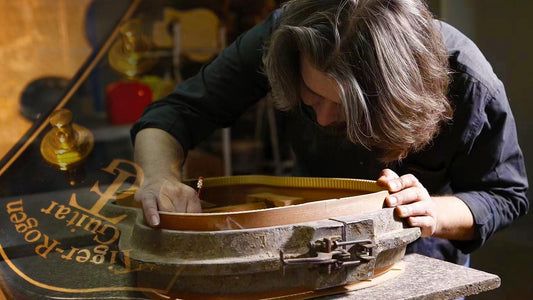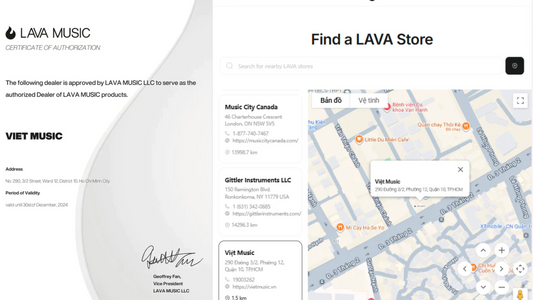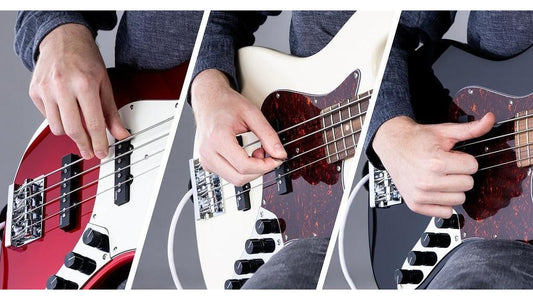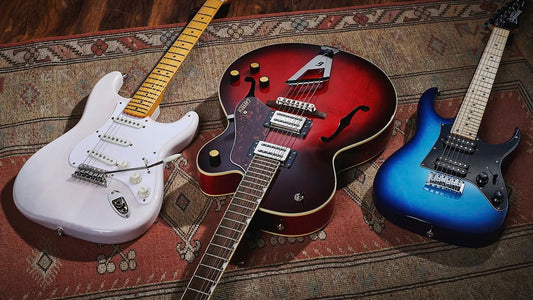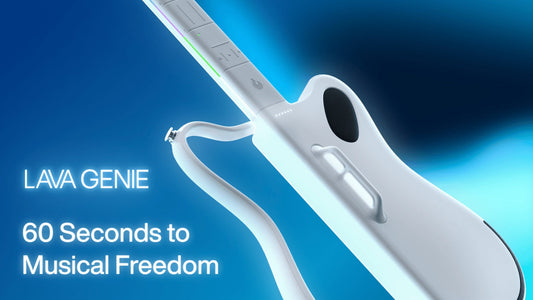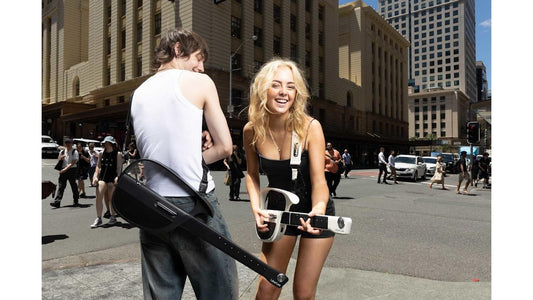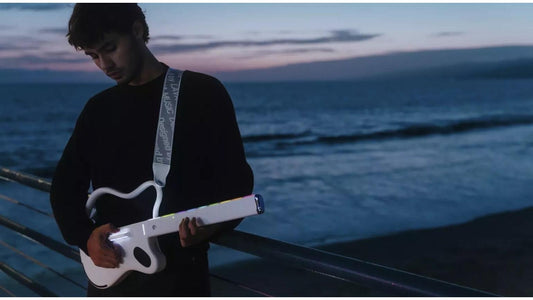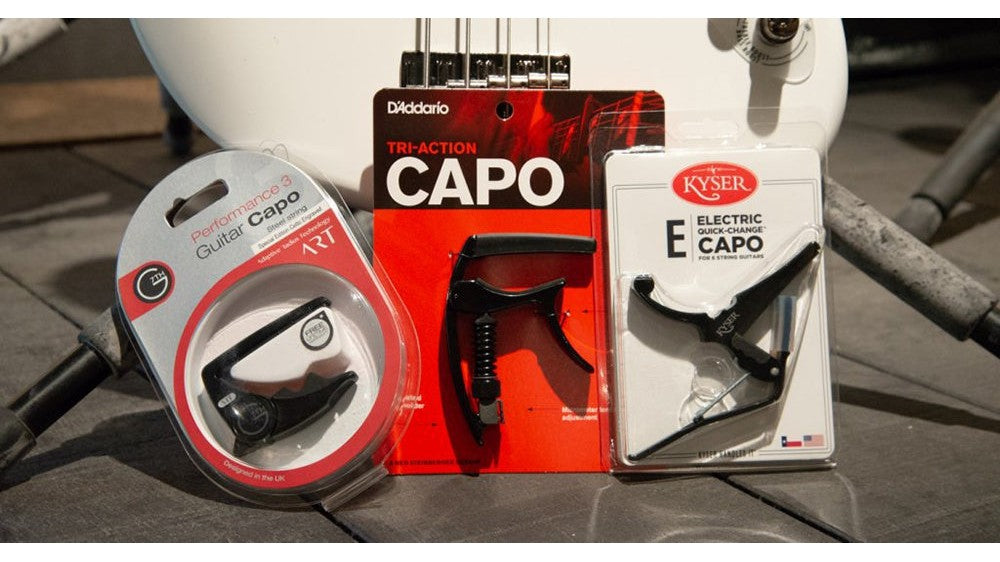
Một Số Mẫu Capo Chất Lượng Cho Guitar
Khi hỏi bất kỳ người chơi guitar nào, đâu là công cụ không thể thiếu của họ, bạn có thể nghe thấy một vài người trong số họ đề cập đến capo. Đặc biệt là những người yêu thích guitar acoustic. Capo đôi khi có thể là một chủ đề không được ưa chuộng cho lắm tại các cuộc thảo luận về phụ kiện cho đàn guitar. Chúng không đắt, không tiện dụng như một số phụ kiện guitar khác, nhưng những thiết bị nhỏ này mở ra một thế giới âm thanh hoàn toàn mới cho việc chơi đàn của bạn.
Capo là gì?
Capo là một phụ kiện guitar nhỏ nhưng có thể làm tăng cao độ của các dây đàn. Thiết bị kẹp dây đàn của bạn tại vị trí mà bạn gắn nó lên, giữ lấy cần đàn guitar của bạn và di chuyển nó lên cao hơn trên cần đàn. Vì vậy, nếu bạn đang điều chỉnh cây đàn theo tiêu chuẩn và bạn gắn capo ở phím đàn thứ năm, các dây mở của bạn bây giờ sẽ là: A, D, G, C, E, A.
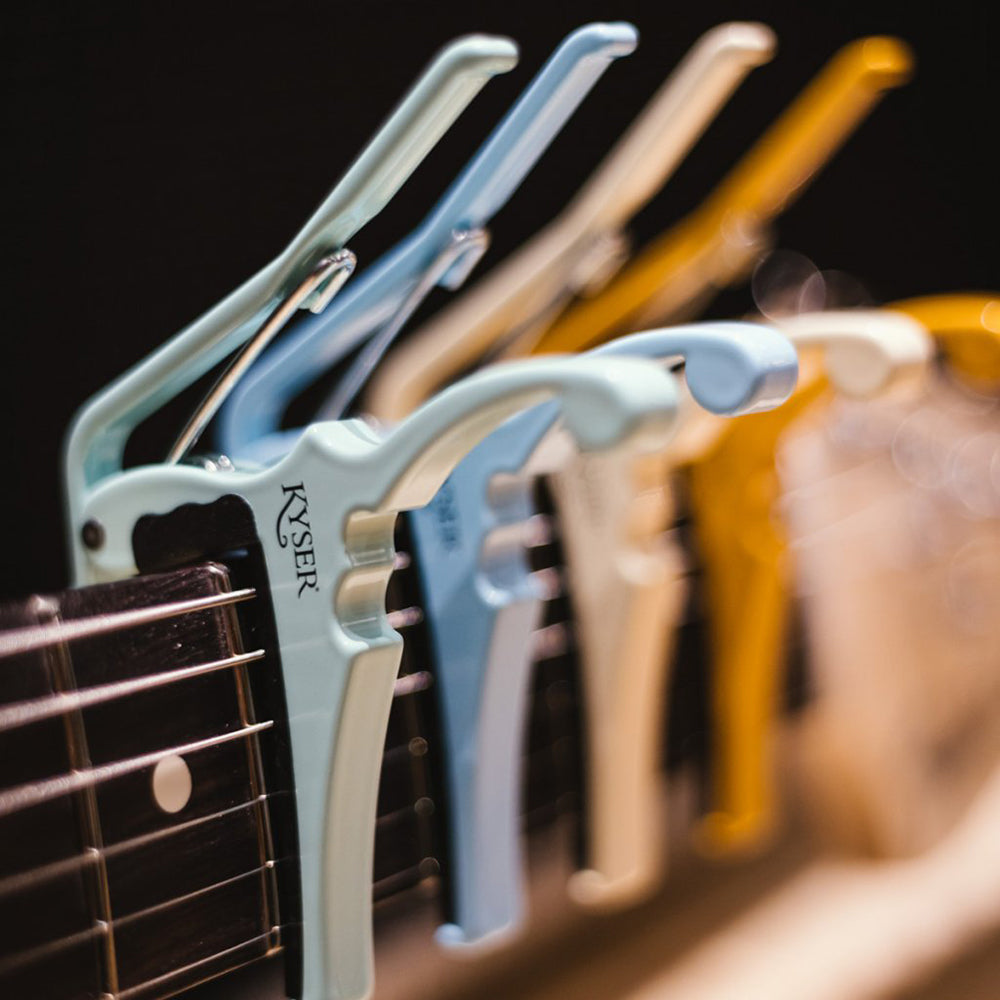
Bạn có cần capo không?
Chắc chắn là có rồi, nhưng nếu bạn có thể đọc bản nhạc và chơi đàn thành thạo, bạn có lẽ sẽ không cần đến capo. Hợp âm G có capo được đặt trên phím đàn thứ ba sẽ phát ra âm thanh hoàn toàn khác với hợp âm B buông được chơi mà không có capo. Cách các dây buông kêu vang hay hơn nhiều. Thử mà xem!
Nếu bạn chơi đàn y hệt như các bài hát yêu thích của mình, bạn sẽ cần đến capo để làm điều đó và rất có thể, việc chơi cũng sẽ dễ dàng hơn nhiều. Wonderwall của Oasis? Bạn sẽ cần capo. Here Comes the Sun của The Beatles? Bạn cũng sẽ cần capo.
Chọn capo tốt nhất dành cho cây đàn của bạn
Capo thường có giá thành rất rẻ và hầu hết những người chơi guitar sẽ không cảm thấy gò bó khi họ cần thêm một cái vào bộ công cụ của mình. Nhưng cũng giống như các loại đàn guitar, capo cũng đa dạng về kiểu loại. Vì vậy, bạn nên bắt đầu từ đâu? Cần cân nhắc những yếu tố gì?
Độ vừa
Trước tiên, bạn phải xem xét nhạc cụ bạn sẽ sử dụng với capo. Đàn guitar điện? Đàn guitar acoustic? guitar cổ điển? 12 dây? Mandolin? Hay thậm chí là bass?! Hầu hết các capos sẽ thực hiện một công việc bình thường trên bất kỳ nhạc cụ nào trong số này, nhưng các nhạc cụ khác nhau có các bảng phím dày mỏng khác nhau, hay còn gọi là độ cong của phím đàn. Guitar 12 dây có thể có cần rộng hơn mà một số loại capo không thể vừa. Một cây guitar acoustic có thể có bán kính cần đàn cong trong khi một cây guitar cổ điển có một mặt phẳng. Nếu sử dụng sai, capo có thể tạo ra tiếng ù. Tất cả những gì bạn phải làm là chọn một chiếc capo phù hợp với nhu cầu của bạn.
Độ căng của capo
Capo được thiết kế tốt sẽ phân phối lực căng vừa phải trên dây của cây đàn guitar của bạn. Quá nhiều áp lực có thể khiến cây đàn nghe không được hay cho lắm, ngược lại, quá ít áp lực, cây đàn sẽ kêu tiếng ù ù. Một số capo như G7th Newport cho phép bạn vặn ở mức độ căng hoàn hảo thông qua một núm vặn.
Dùng capo như thế nào
Nhạc sĩ là các nhà sáng tạo. Hầu hết các bài hát yêu cầu capo sẽ cần capo kẹp xuyên suốt trong suốt quá trình chơi. Nhưng tại sao phải 100% làm theo điều đó cơ chứ? Một số nghệ sĩ guitar sẽ dùng capo khi đang chơi giữa chừng một bài hát hoặc di chuyển capo dọc theo phím đàn. Nếu bạn thấy mình cần phải di chuyển capo thường xuyên, bạn sẽ thấy những loại capo dạng kẹp như Kyser Quick-Change Capo là một lựa chọn phù hợp. Ngoài ra còn có những loại capo vô cùng đặc biệt. Đây là nơi mọi thứ trở nên sáng tạo thực sự. Có những capo chỉ thay đổi cao độ trên một số dây. Đây là những đoạn capos một phần như Kyser Short-cut có thể nhấn dây A D và G để tạo ra âm thanh tương tự như cách điều chỉnh DADGAD nổi tiếng.
Những loại capo chất lượng
G7th Performance 3 Guitar capo
G7th Performance 3 là một capo đặc biệt dường như thoả mãn được tất cả các yêu cầu của bạn. Còn nhớ về độ rộng cần đàn chứ? G7th đã cho ra mắt một capo vừa vặn với độ rộng cần đàn của đàn guitar của bạn. Nhờ nhiều năm nghiên cứu và tiếp thu phản hồi của người dùng, Công nghệ bán kính thích ứng đã được cấp bằng sáng chế của G7th cho phép đệm dây cung cấp độ căng chính xác cho từng dây - lực căng nhiều hơn trên dây dày hơn, dây thấp hơn ít lực hơn. G7th Performance 3 cũng cho phép người chơi có thể chơi đàn bằng 1 tay. Được thiết kế với cơ chế bóp-nhả dễ dàng, bạn có thể di chuyển capo lên xuống phím đàn bằng một tay, gắn vào và tháo ra mà không cần tốn nhiều công sức.

Kyser Quick Change Capo
Kyser đặt ra tiêu chuẩn công nghiệp cho các loại capo đáng tin cậy và dễ sử dụng. Kyser Quick Change Capo được làm bằng nhôm nhẹ, cho phép bạn điều chỉnh nó bằng một tay với tốc độ nhanh. Người chơi thường yêu thích cơ chế này bởi nó giúp dây của họ luôn chuẩn tone và không bị rè.

Ernie Ball Axis Dual Radius Capo
Như tên gọi của nó, Ernie Ball Axis Dual Radius Capo cho phép bạn sử dụng một capo cho hai loại cần đàn khác nhau - một cho mặt phím phẳng và một cho mặt phím cong. Thiết kế này tưởng chừng đơn giản nhưng lại vô cùng nổi bật với lớp tráng mạ đồng lấp lánh, thu hút mọi ánh nhìn. Capo có 2 mặt: Một mặt là phẳng, mặt còn lại là cong, chỉ cần kẹp chúng theo đúng hướng xung quanh cần đàn của bạn!

Taylor Capo, 12-string/nylon
Công nghệ có vẻ xưa cũ này có thể không phải là công nghệ tiên tiến hoặc tinh vi nhất, nhưng nó có những lợi ích của nó. Thiết kế tạo áp lực từ trực tiếp phía sau dây đàn thay vì mặt bên của cần đàn, cho phép phân bổ lực căng đều trên các dây đàn. Vít cũng cho phép bạn tinh chỉnh độ căng vừa phải cho nhạc cụ của mình.

G7th Newport Guitar Capo
Một loại capo khác cho phép bạn tinh chỉnh độ căng, G7th Newport là một loại capo nhẹ dễ dùng, hoàn hảo trong mọi trường hợp. Thiết kế cần gạt lật ẩn của nó là một kiểu tháo lắp nhanh chóng cho phép bạn gắn và tháo capo một cách dễ dàng.

Xem thêm:
